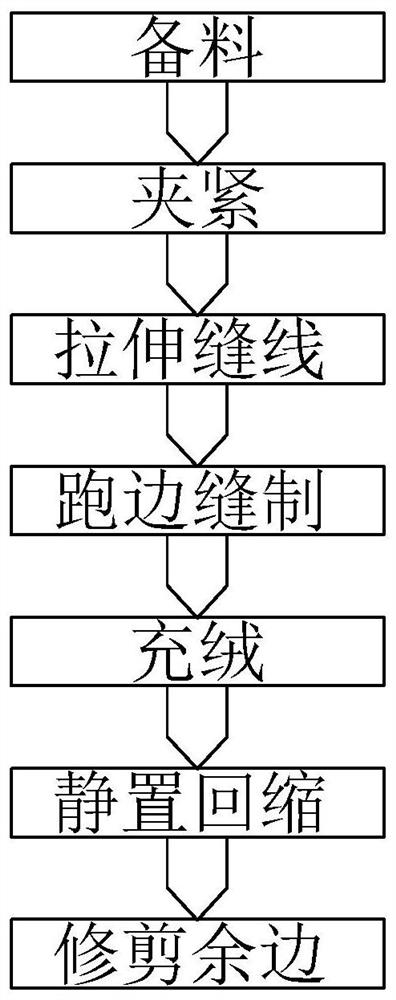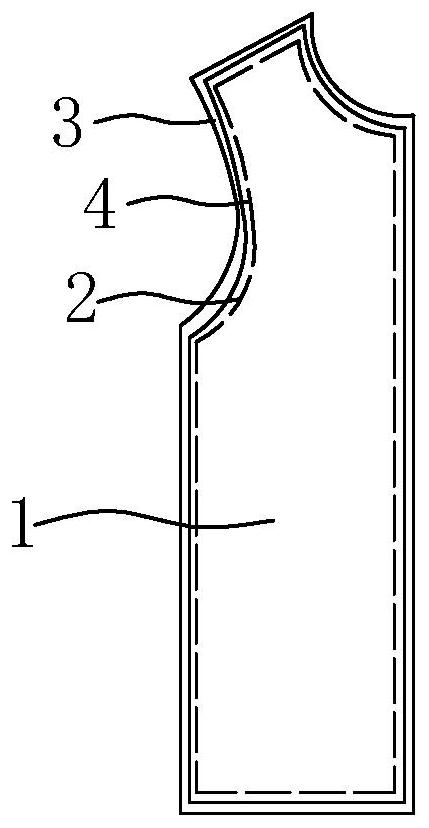Down-proof sewing process
A technology of anti-drilling and craftsmanship, applied in the field of clothing production, can solve the problems of down drilling, rough workmanship, and low quality, and achieve the effect of improving practicability
- Summary
- Abstract
- Description
- Claims
- Application Information
AI Technical Summary
Problems solved by technology
Method used
Image
Examples
Embodiment Construction
[0022] The present invention will now be further described with reference to the accompanying drawings and specific embodiments.
[0023] Example;
[0024] refer to Figure 1 to Figure 2 , an anti-drill down sewing process, comprising the following steps:
[0025] S11, prepare materials, select fabrics, cut the selected fabrics into an upper fabric layer and a lower fabric layer according to a predetermined template, and select elastic cotton and polyester yarns as fabric yarns.
[0026] S12, clamping, overlapping the upper fabric layer and the lower fabric layer to form a garment piece 1, and clamping it along the edge of the garment piece 1 with a clamp.
[0027] S13, stretch the suture, tighten the garment piece 1 after clamping, pass the taut garment piece 1 through the template to keep it in a taut state and clamp it on the template machine, and then stretch the fabric to traverse the thread , so that the length of the fabric line is extended to 1.05-1.20 times the ori...
PUM
 Login to View More
Login to View More Abstract
Description
Claims
Application Information
 Login to View More
Login to View More - R&D
- Intellectual Property
- Life Sciences
- Materials
- Tech Scout
- Unparalleled Data Quality
- Higher Quality Content
- 60% Fewer Hallucinations
Browse by: Latest US Patents, China's latest patents, Technical Efficacy Thesaurus, Application Domain, Technology Topic, Popular Technical Reports.
© 2025 PatSnap. All rights reserved.Legal|Privacy policy|Modern Slavery Act Transparency Statement|Sitemap|About US| Contact US: help@patsnap.com


